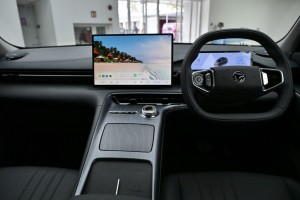How F1 technology is set to help Alpine cars evolve
By ETX STUDIO | 29 May 2021
PARIS: To optimise the design of future Alpine road cars, the brand has called directly on the teams of aerodynamics engineers working with the Alpine Formula 1 team, based in Enstone, UK.
The aim is to benefit from their knowledge and expertise in air flow management and wind tunnel testing to optimise the aerodynamics of forthcoming models.
Working with a wind tunnel notably helps eliminate lift, reduce drag to a minimum, and generate downforce in a precise ratio. Spoilers, deflectors, diffusers, side-pods and wings are just some of the features precision-designed to optimise performance of the single-seaters.
In a similar aim - of boosting performance while optimising the various parts of its future car bodies - Alpine has started working hand in hand with its F1 team.
An Alpine A110 has, in fact, crossed the English Channel to get kitted out with the various sensors usually used for F1, with pressure sensors similar to the pitot sensors seen on aircraft. These will be used to map the entire volume of air that passes beneath the car.
Note that Alpine also uses a special paint developed by its F1 colleagues, which, when applied to the hood and wings of the car, spreads out from a certain speed to give a precise view of air flow over the car's bodywork.
The results of these wind tunnel tests will help designers approve certain options and elements to the detriment of others, whether for future evolutions of the A110 or for other upcoming models.
Alpine is currently participating in the Formula 1 world championship with Spanish driver Fernando Alonso (world champion, with Renault, in 2005 and 2006) and French driver, Esteban Ocon.
Tags
Autos Alpine
Reviews

7.6
Maserati GranTurismo (Mk2) Modena: Sharp and smooth operator

6.8
Triumph Tiger 900 GT Pro: Multi-talented adventurer

Hyundai Ioniq 5 N: Born rascal

6.6
Husqvarna Svartpilen 401: Inspiring retro design

8.8
smart #1 (Premium): Agile, engaging, roomy, premium motoring

6.6
Suzuki V-Strom 250 SX: Multi terrain warrior

Proton e.MAS 7 impresses in quick dynamic driving exercises

Nissan Kicks e-Power: Kicking off a new efficiency
Videos

StarCarSifu Editors' Choice Awards 2024: Top winners

The Snowball – Lamborghini’s Heartwarming Christmas Story of...

EVOGO battery swapping solution showcased at IAA Mobility 20...
